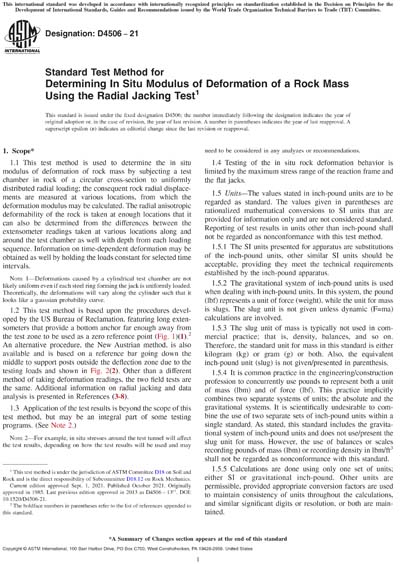Most recent
ASTM D4506-21
Standard Test Method for Determining In Situ Modulus of Deformation of a Rock Mass Using the Radial Jacking Test
1.1This test method is used to determine the in situ modulus of deformation of rock mass by subjecting a test chamber in rock of a circular cross-section to uniformly distributed radial loading; the consequent rock radial displacements are measured at various locations, from which the deformation modulus may be calculated. The radial anisotropic deformability of the rock is taken at enough locations that it can also be determined from the differences between the extensometer readings taken at various locations along and around the test chamber as well with depth from each loading sequence. Information on time-dependent deformation may be obtained as well by holding the loads constant for selected time intervals.
Note 1:Deformations caused by a cylindrical test chamber are not likely uniform even if each steel ring forming the jack is uniformly loaded. Theoretically, the deformations will vary along the cylinder such that it looks like a gaussian probability curve.









